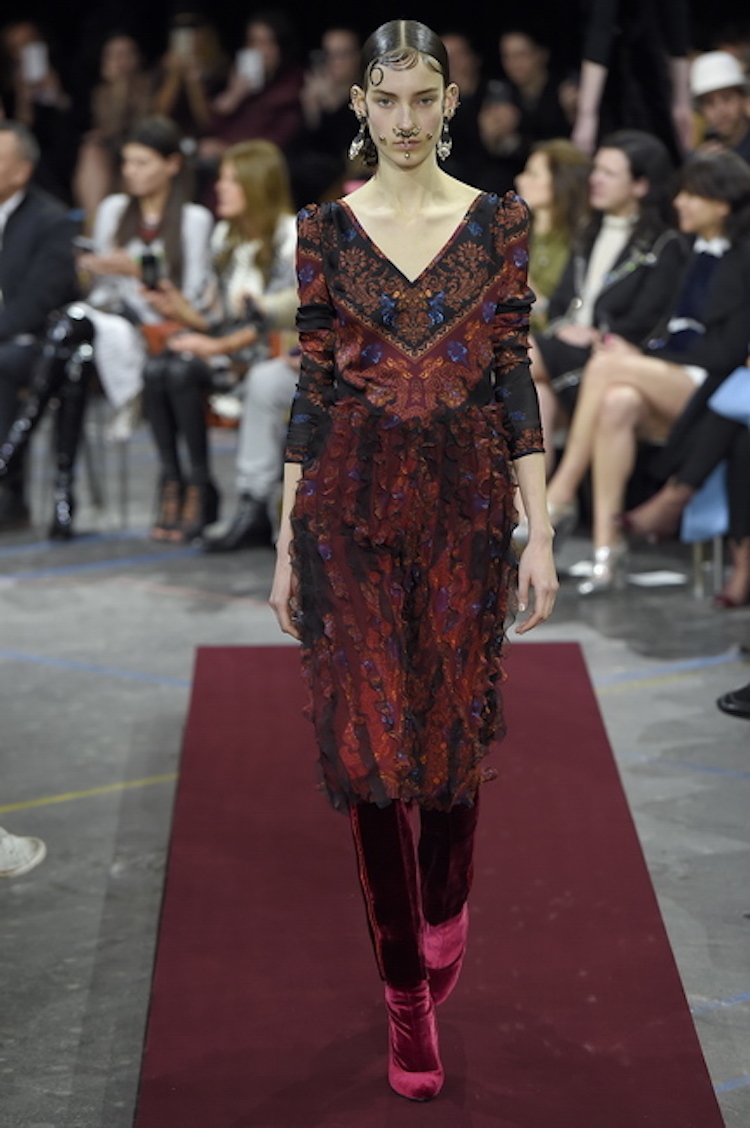Since the 1979 Revolution, conversations about Iranian fashion have centered mostly on mandatory dress codes and religious proscriptions. What’s less discussed is the massive influence of Persian culture on Western fashion. But to see Iran’s influence, you only need to look as far as your pajamas. Or a pair of high heels. Because so many of the pieces we take for granted as staples of Western fashion — from pajamas and high heels to paisley patterns, khakis, caftans, and even umbrellas — all have their roots in Iran and Persian culture.
In recent years, Western designers have also harnessed Persian culture in their collections (and only rarely credited their inspiration). Hermès presented its sumptuous “Tabriz” collection in 2013, inspired by Persian miniatures and rug designs (and named after the Iranian city). Riccardo Tisci’s fall/winter 15 collection for Givenchy made use of Persian textile motifs on lush velvet dresses. And for spring/summer 12, Maison Martin Margiela sent a series of looks down the runway that were equal parts Persian carpet and plastic wrap.
These collections aren’t signs of a recent leaning towards Persian imagery and aesthetics; they’re examples of Western fashion’s longstanding fascination with all things Persian. Take paisley, for example. Alternatively known as the “Persian pickle” (boteh jegheh in Persian), the pattern has been touted by Italian fashion house Etro since 1968 and is often associated with the swinging sixties. But it has its roots in Sassanian-era Iran (224-651 AD). Originally designed to represent a tall and straight cypress tree, the pattern was later bent to symbolize the state of Iran following the Arab invasions of the seventh century A.D.; in other words, although the Sassanian Empire was crushed by the Arabs, Iranian culture and traditions prevailed, undaunted.
Fast-forward a few centuries, and the high heel was introduced to Europe by Persian cavalrymen on diplomatic missions during the “golden age” of the Safavid era (1501-1722), particularly during the reign of Shah Abbas the Great. Quickly adopted by Western Europe, they were seen as markers of social status. High-heeled shoes not only broadened the sartorial horizons of countries like France, but also allowed those who rocked them to channel the look of the Persian characters they read about in Antoine Galland’s famous 18th-century translation of the Thousand and One Nights.
A complicating factor in Persia’s cultural history is that many Persian innovations — in fashion and beyond — are often mistakenly attributed to India. It’s an understandable mix-up: during the reign of the Mughals (1526-1857), Persian culture was adopted by the Indian elites. When the British colonized India in the mid-19th century, they not only encountered lucrative trade possibilities and resource-rich land, but they also saw new clothes. Although they were introduced to the West through India, garments such as pyjamas (pay-jameh, literal translation: “leg clothing”), cummerbunds, khakis, pashminas (pashmineh, meaning “woolen”), and shawls, as well as seersucker (shir o shekar, or “milk and sugar”), are all products of Persian culture. And, while they haven’t quite entered the mainstream (yet), turbans (from the Persian dolband) also harbor an Iranian connection within their folds.
For all its influence on the fashion of the world, Iran is rarely, if ever, credited by Western designers and brands. Its politics have long overshadowed its rich and ancient culture. Yet, only a few centuries ago, Europeans were going gaga over Persian shoes, and shortly before the Revolution, in December 1969, Vogue featured photographer Henry Clarke’s pictures of Lauren Hutton and Marisa Berenson posing in the courtyards of Esfahan and amidst the ruins of Persepolis.
As Trump’s administration draws strong “us” and “them” distinctions between the U.S. and Muslim-majority countries, there’s never been a better time to recognize Iran’s aesthetic influence on the West. Yes, Marilyn Monroe may have been as American as apple pie, but those marabou high-heeled slippers on her feet? You know who to thank.
Credits
Text Joobin Bekhrad
